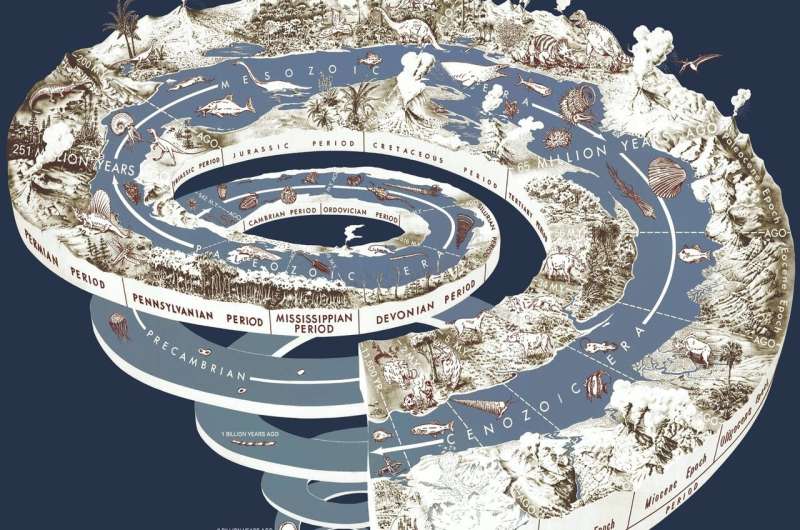Gradual evolution is back: Darwinian theory of gradual process explained in new research

Abrupt shifts in the evolution of animals—short periods of time when an organism rapidly changes size or form—have long been a challenge for theorists including Darwin. Now a newly published research paper supports the idea that even these abrupt changes are underpinned by a gradual directional process of successive incremental changes, as Darwin's theory of evolution assumes.
Published in Nature Communications today, evolutionary biologists from the University of Reading propose a new statistical model which seeks to explain these sudden changes and long periods of stasis that have been seen in the evolutionary history of some species.
The team led by Professor Mark Pagel along with colleagues Dr. Ciara O'Donovan and Dr. Andrew Meade, developed a statistical model that reconstructed the body-size changes which occurred throughout the 170-million-year history of more than 2800 mammal species.
The authors found that despite there being periods for some mammals during which abrupt changes in size occur, these occurrences can be understood as 'normal' changes that draw on the natural variability that evolution routinely adds to natural populations.
Prof Mark Pagel, Professor of Evolutionary Biology at the University of Reading and lead author of the paper said:
"Our statistical model provides a basis for accommodating what has previously been a thorn in the side of theorists such as Darwin.
"Darwin's theory of evolution by natural selection predicts gradual and incremental changes to organisms occurring over very long timespans. But the fossil record frequently shows very abrupt changes in the sizes, shapes, colors and other features of organisms, and these have been used for at least fifty years to challenge the Darwinian orthodoxy.
"We show in this paper that even these abrupt changes are easily explained as cases of what is known as 'directional selection'—when natural selection strongly pulls a trait in one direction. No special extra-Darwinian mechanisms are required."
Many of these abrupt changes occurred around 60-70 million years ago, a period that saw the rise of many different mammal groups from earlier forms. For example, over a 100,000 year period an early small grazing animal (Conacodon entoconus), ancestral to today's modern cows, antelopes, and giraffes, increased in size over 70-fold. More recently, the baleen whales (e.g., humpback, blue and sperm whales) have increased over 100-fold in size from a small dolphin-like ancestor in the same amount of time (~ 7 million years) that separates modern humans from their common ancestor with the chimpanzees.
More information: General statistical model shows that macroevolutionary patterns and processes are consistent with Darwinian gradualism, Nature Communications (2022). DOI: 10.1038/s41467-022-28595-z
Journal information: Nature Communications
Provided by University of Reading





















